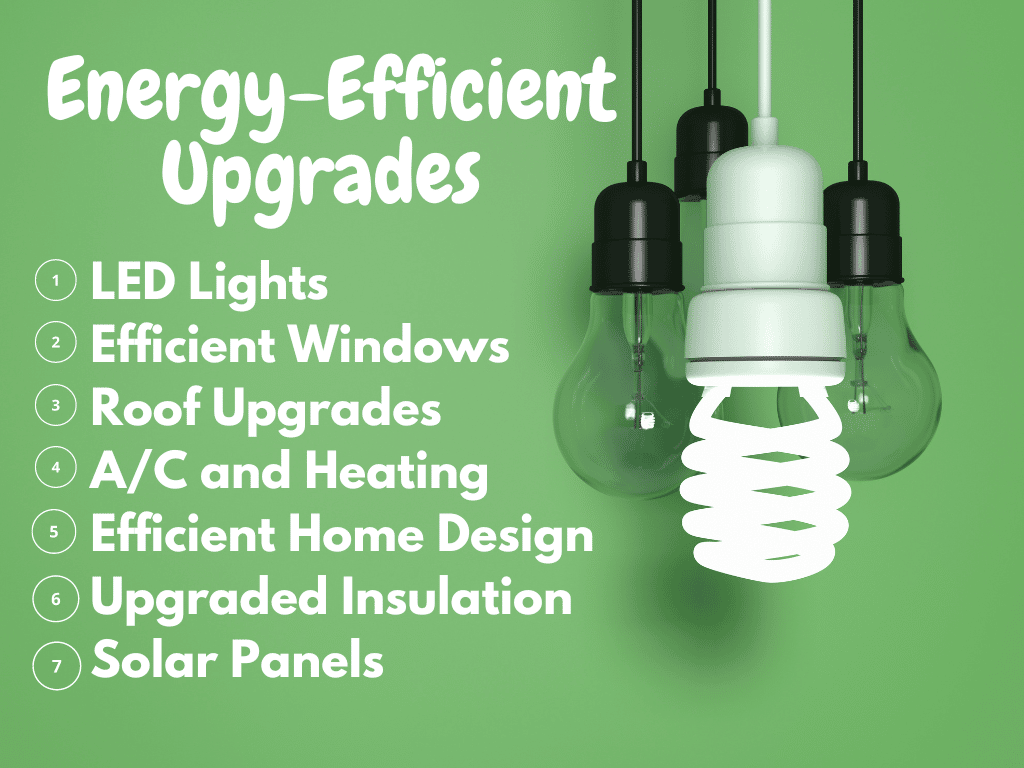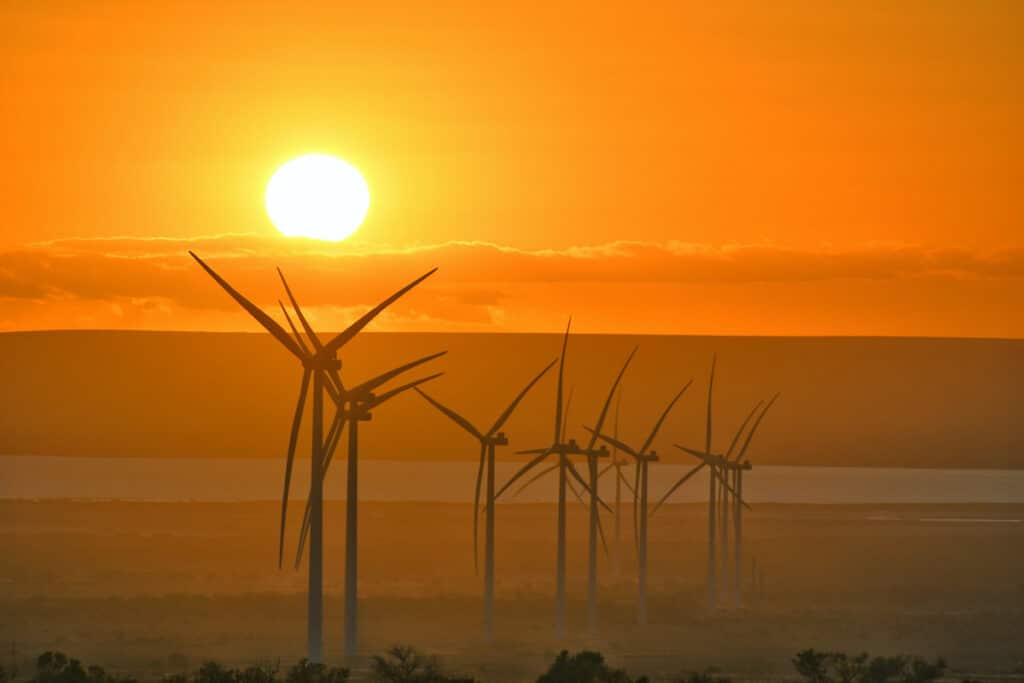This post was originally published on Eco Watch
Realtors are used to answering questions about available closet space and the number of bathrooms, but there’s a new question people are asking when searching for a new home:
How’s the energy efficiency?
Recent research has shown that more Americans are searching to buy or build an energy-efficient home. And with climate change worsening and energy bills rising, it’s perhaps not much of a surprise that sustainability is shifting to a top priority.
But just how much of a difference does it make? Do homes that help people to conserve energy really help to save money and the planet?
Let’s look at some of the top statistics for energy-efficient homes.
Jump To: Top Home Energy Facts and Statistics | Energy Efficient Window Facts and Statistics | LED Light Facts and Statistics | Sustainable Roofing Facts and Statistics | High-Performance HVAC Facts and Statistics | Residential Solar Facts and Statistics
Energy-Efficient Homes: Statistics and Facts
A survey from the National Association of Realtors (NAR) revealed that 63% of agents and brokers find it valuable to promote energy efficiency in a house listing.
Here are some stats that back up why homeowners are — or why they should be — prioritizing energy-savvy homes.
- Energy-efficient-rated homes sell for 2.7% more than unrated homes, and better-rated homes sell for 3% to 5% more than lesser-rated homes.
- Nine out of 10 homebuyers would rather buy a more expensive home with energy-efficient features versus a cheaper and less energy-efficient home.
- Real estate agents report that energy efficiency adds $8,246 to a home’s value in 2022, up more than $1600 from 2021.
- Homes and commercial buildings consume 40% of the energy used in the United States.
- To enhance energy efficiency, homes can benefit from upgrades such as air leak sealing, new windows, programmable thermostats, insulation, energy-efficient water heaters, Energy Star appliances, solar panels, and LED lighting.
- Compared to traditional homes, LEED-certified homes typically consume 20% to 30% less energy, with some achieving remarkable energy reductions of up to 60%.
- Residential energy accounts for roughly 20% of annual greenhouse gas (GHG) emissions in the U.S.
- A properly insulated attic can reduce your energy bill by 10% to 50%, according to the Department of Energy.
- Switching to energy-efficient windows can save the average homeowner up to $583 per year.
- Inefficient windows lead to $50 billion in energy waste per year in the U.S.
Watch Below: Learn what our favorite science guy, Bill Nye, is doing to improve the energy efficiency of his home.
Energy-Efficient LED Lights for Homes: Statistics and Facts
- LED bulbs use about 90% less energy and last 25 times longer than incandescent bulbs, saving the average household about $225 per year.
- An average household dedicates 15% of its energy budget to lighting. Using new technologies can reduce lighting energy use in your home by 50% to 75%.
- LED lights contain no mercury and are 95% recyclable.
- LEDs excel in energy efficiency, converting 95% of their energy into light, while incandescent bulbs waste a staggering 90% of their energy as heat.
- By 2030, LEDs are projected to account for an impressive 87% of all lighting sources worldwide.
- The widespread adoption of energy-efficient LED lighting is projected to slash global electricity consumption for lighting by 30-40% by 2030.
Energy-Efficient Roofs for Homes: Statistics and Facts
Replacing your roof will not only help protect your home from the elements, but it can also drastically increase its energy efficiency. And as it turns out, the best roofing materials for the environment are also the best roofs for lowering personal energy consumption.
- You can save up to 30% on air cooling costs by installing a metal roof over an asphalt one.
- A green roof would save about $200,000 over its estimated lifespan of 40 years, with nearly two-thirds of that coming from reduced energy costs.
- Metal roofs are 100% recyclable after use. Additionally, aluminum roofing materials are made from 95% post-consumer recycled contents and steel roofing is made from 10% post-consumer recycled contents.
- A metal roof replacement will increase your home value by more than $23,000 — more than $6,000 more compared to an asphalt shingle roof replacement.
Energy-Efficient Home HVAC Systems: Statistics and Facts
Heating, ventilation and air conditioning (HVAC) systems are responsible for a whopping 48% of a home’s energy usage. Small changes like switching from a gas furnace to a heat pump or choosing an air conditioner with a better SEER rating can make a big difference for your home and for the planet.
- Conventional air conditioner systems cost over $29 billion annually, according to the U.S. Department of Energy.
- The $4.28 billion High-Efficiency Electric Home Rebate Program (part of the Inflation Reduction Act) provides rebates of up to $8,000 to install heat pumps, which can both heat and cool homes. It also provides a rebate of up to $1,750 for heat-pump water heaters.
- Standard water heaters account for 14-18% of your utility bill.
- Energy Star-certified smart thermostats can save homeowners between 8% and 15% on electricity costs.
- According to The U.S. Department of Energy, adjusting your thermostat by 7-10 degrees for eight hours a day can save up to 10% on energy costs.
Energy-Efficient Home Solar Systems: Statistics and Facts
By installing solar panels on your roof or switching to solar shingles, you can rely less on traditional energy sources and generate your own electricity. Plus, housing trends point toward an increasing amount of interest in homes with solar features.
- On average, a U.S. homeowner sees $20,000 of lifetime savings from switching to solar energy.
- Solar installations increase a home’s resale value by an average of 4.1%.
- The cost of adding solar panels has dropped more than 70% over the last decade.
- The number of U.S. homes with installed solar panels has increased by an average of 32% per year since the year 2005.

Energy Conservation: Statistics and Facts
- Americans waste $200 to $400 in home energy expenses per year due to air leaks and outdated HVAC (heating, ventilation and air conditioning) systems.
- Energy efficiency measures, including building insulation and efficient appliances, are projected to save IEA countries USD 680 billion in energy costs in 2022, representing a 15% reduction in their total energy expenditure.
- Making energy-efficient choices helps burn fewer fossil fuels, which helps lessen the bi-product of greenhouse gasses and other air pollutants.
The post Energy-Efficient Homes 2023: Top 33 Energy Facts and Statistics appeared first on EcoWatch.





0 Comments